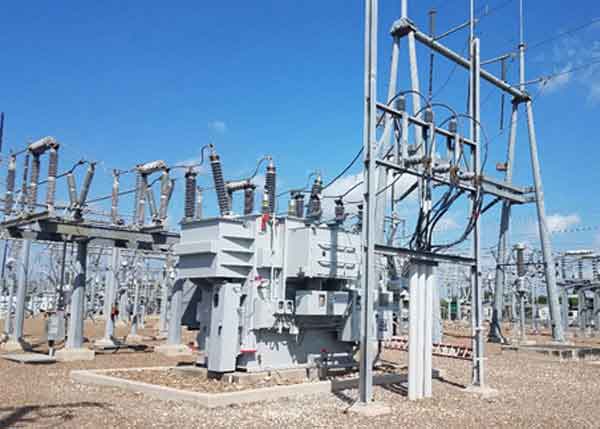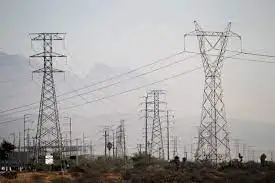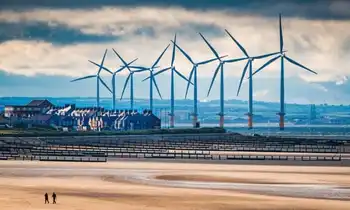Barakah Unit 1 100 Percent Power signals the APR-1400 reactor delivering 1400MW of clean baseload electricity to the UAE grid, advancing decarbonisation, reliability, and Power Ascension Testing milestones ahead of commercial operations in early 2021.
Key Points
The milestone where Unit 1 reaches full 1400MW output to the UAE grid, providing clean, reliable baseload electricity.
✅ Delivers 1400MW from a single generator to the UAE grid
✅ Enables clean, reliable baseload power with zero operational emissions
✅ Completes key Power Ascension Testing before commercial operations
The Emirates Nuclear Energy Corporation, ENEC, has announced that its operating and maintenance subsidiary, Nawah Energy Company, Nawah, has successfully achieved 100% of the rated reactor power capacity for Unit 1 of the Barakah Nuclear Energy Plant. This major milestone, seen as a crucial step in Abu Dhabi towards completion, brings the Barakah plant one step closer to commencing commercial operations, scheduled in early 2021.
100% power means that Unit 1 is generating 1400MW of electricity from a single generator connected to the UAE grid for distribution. This milestone makes the Unit 1 generator the largest single source of electricity in the UAE.
The Barakah Nuclear Energy Plant is the largest source of clean baseload electricity in the country, capable of providing constant and reliable power in a sustainable manner around the clock. This significant achievement accelerates the decarbonisation of the UAE power sector, while also supporting the diversification of the Nation’s energy portfolio as it transitions to cleaner electricity sources, similar to the steady development in China of nuclear energy programs now underway.
The accomplishment follows shortly after the UAE’s celebration of its 49th National Day, providing a strong example of the country’s progress as it continues to advance towards a sustainable, clean, secure and prosperous future, having made the UAE the first Arab nation to open a nuclear plant as it charts this path. As the Nation looks towards the next 50 years of achievements, the Barakah plant will generate up to 25 percent of the country’s electricity, while also acting as a catalyst of the clean carbon future of the Nation.
Mohamed Ibrahim Al Hammadi, Chief Executive Officer of ENEC said: "We are proud to deliver on our commitment to power the growth of the UAE with safe, clean and abundant electricity. Unit 1 marks a new era for the power sector and the future of the clean carbon economy of the Nation, with the largest source of electricity now being generated without any emissions. I am proud of our talented UAE Nationals, working alongside international experts who are working to deliver this clean electricity to the Nation, in line with the highest standards of safety, security and quality." Nawah is responsible for operating Unit 1 and has been responsible for safely and steadily raising the power levels since it commenced the start-up process in July, and connection to the grid in August.
Achieving 100% power is one of the final steps of the Power Ascension Testing (PAT) phase of the start-up process for Unit 1. Nawah’s highly skilled and certified nuclear operators will carry out a series of tests before the reactor is safely shut down in preparation for the Check Outage. During this period, the Unit 1 systems will be carefully examined, and any planned or corrective maintenance will be performed to maintain its safety, reliability and efficiency prior to the commencement of commercial operations.
Ali Al Hammadi, Chief Executive Officer of Nawah, said: "This is a key achievement for the UAE, as we safely work through the start-up process for Unit 1 of the Barakah plant. Successfully reaching 100% of the rated power capacity in a safe and controlled manner, undertaken by our highly trained and certified nuclear operators, demonstrates our commitment to safe, secure and sustainable operations as we now advance towards our final maintenance activities and prepare for commercial operations in 2021." The Power Ascension Testing of Unit 1 is overseen by the independent national regulator – the Federal Authority for Nuclear Regulation (FANR), which has conducted 287 inspections since the start of Barakah’s development. These independent reviews have been conducted alongside more than 40 assessments and peer reviews by the International Atomic Energy Agency, IAEA, and World Association of Nuclear Operators, WANO, reflecting milestones at nuclear projects worldwide that benchmark safety and performance.
This is an important milestone for the commercial performance of the Barakah plant. Barakah One Company, ENEC’s subsidiary in charge of the financial and commercial activities of the Barakah project signed a Power Purchase Agreement, PPA, with the Emirates Water and Electricity Company, EWEC, in 2016 to purchase all of the electricity generated at the plant for the next 60 years. Electricity produced at Barakah feeds into the national grid in the same manner as other power plants, flowing to homes and business across the country.
This milestone has been safely achieved despite the challenges of COVID-19. Since the beginning of the global pandemic, ENEC, and subsidiaries Nawah and Barakah One Company, along with companies that form Team Korea, including Korea Hydro & Nuclear Power, with KHNP’s work in Bulgaria illustrating its global role, have worked closely together, in line with all national and local health authority guidelines, to ensure the highest standards for health and safety are maintained for those working on the project. ENEC and Nawah’s robust business continuity plans were activated, alongside comprehensive COVID-19 prevention and management measures, including access control, rigorous testing, and waste water sampling, to support health and wellbeing.
The Barakah Nuclear Energy Plant, located in the Al Dhafra region of the Emirate of Abu Dhabi, is one of the largest nuclear energy new build projects in the world, with four APR-1400 units. Construction of the plant began in 2012 and has progressed steadily ever since. Construction of Units 3 and 4 are in the final stages with 93 percent and 87 percent complete respectively, benefitting from the experience and lessons learned during the construction of Units 1 and 2, while the construction of the Barakah Plant as a whole is now more than 95 percent complete.
Once the four reactors are online, Barakah Plant will deliver clean, efficient and reliable electricity to the UAE grid for decades to come, providing around 25 percent of the country’s electricity and, as other nations like Bangladesh expand with IAEA assistance, reinforcing global decarbonisation efforts, preventing the release of up to 21 million tons of carbon emissions annually – the equivalent of removing 3.2 million cars off the roads each year.
Related News












